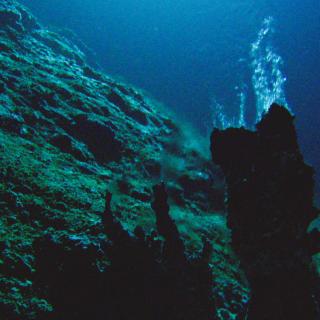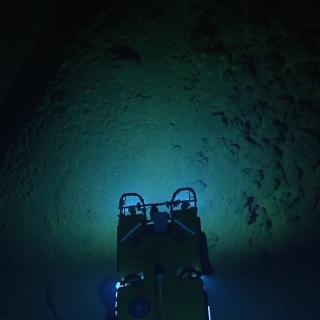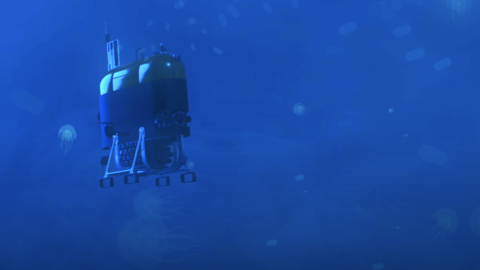Exploring Ocean Worlds with SUBSEA
Research aboard E/V Nautilus may assist in the search for extraterrestrial life, as exploration of hydrothermal vent systems informs the design of future science-focused missions across our solar system! In 2018, the SUBSEA (Systematic Underwater Biogeochemical Science and Exploration Analog) team launched their first field program, supported by NASA’s Science Mission Directorate and NOAA’s Office of Ocean Exploration and Research, to explore iron-rich hydrothermal vent systems on Lō‘ihi Seamount off Hawai'i.
As the 2018 expedition wrapped up aboard E/V Nautilus, Lead Scientists Dr. Darlene Lim of NASA Ames and Dr. Christopher German of Woods Hole Oceanographic Institution shared their insights into the future of ocean worlds research with Lead Science Communication Fellow Jenny Woodman of Proteus Science Communication. Catch up on the team's findings in this conversation, and learn more about the 2019 SUBSEA expedition to explore Gorda Ridge, an active hydrothermal vent system that departs from the convention of black smoker hydrothermal systems, instead emitting clear fluids from the seafloor.
Learn more about the 2018 SUBSEA expedition and the 2019 SUBSEA expedition.

Gorda Ridge
This expedition continues the multi-year SUBSEA (Systematic Underwater Biogeochemical Science and Exploration Analog) Research Program, a partnership between NASA, NOAA, and various academic research centers. Bringing together both ocean and space exploration teams aboard E/V Nautilus, SUBSEA blends ocean exploration with ocean worlds research to address knowledge gaps related to the exploration of our Solar System.

Kamaʻehuakanaloa (formerly Lō`ihi Seamount)
This expedition marks the beginning of the multi-year SUBSEA (Systematic Underwater Biogeochemical Science and Exploration Analog) Research Program, a partnership between NASA, NOAA, and various academic centers. Bringing together both ocean and space exploration teams aboard E/V Nautilus, SUBSEA blends ocean exploration with ocean worlds research to address knowledge gaps related to the habitability potential of other planets in our Solar System.



